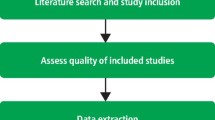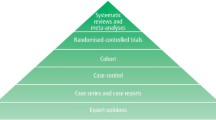Abstract
Objective Following a survey of the literature, a systematic review was carried out with the aim of answering the following questions: 1) What is 'acceptable plagiarism'?; 2) Who carries out plagiarism?; 3) What factors could encourage plagiarism?; 4) How can plagiarism be managed?
Data source and selection Following PRISMA guidelines, data were gathered by searching Scopus, PubMed and Web of Science. After removal of duplicates, 345 titles were identified. Then, having satisfied a priori eligibility criteria, 29 papers were interrogated. The quality of relevant papers (n = 23) was assessed using the Joanna Briggs Critical Appraisal Tool.
Data extraction There was no clear threshold as to what is 'acceptable plagiarism'. Despite this lack of clarity, it is argued consistently that males, and those who wrote in a language that is not their mother tongue, were more likely to plagiarise.
Conclusion Plagiarism is all but inescapable due to various reasons: 1) there is no agreed threshold as to what is 'acceptable plagiarism'; 2) the internet; 3) institutional; and 4) societal expectations. Plagiarism could be mitigated in the student domain by grammar support and, for example, non-written submissions such as presenting work by video. Academic fraud is fundamentally undermined by valuing original and creative scholarship and sound ethical principles.
Key points
-
This paper explores different types of plagiarism in dental scholarship.
-
This paper attempts to identify those who carry out plagiarism and the possible reasons for this academic fraud.
-
This paper proposes structural and specific approaches to manage plagiarism.
This is a preview of subscription content, access via your institution
Access options
Subscribe to this journal
Receive 24 print issues and online access
$259.00 per year
only $10.79 per issue
Buy this article
- Purchase on Springer Link
- Instant access to full article PDF
Prices may be subject to local taxes which are calculated during checkout


Similar content being viewed by others
References
Johnston A. The Legendary Mizners. New York: Farrar Straus and Giroux, 2003.
Devlin M. Policy, preparation, and prevention: Proactive minimization of student plagiarism. J High Educ Policy Manag 2006; 28: 45-58.
Mohammed R A A, Shaaban O M, Mahran D G, Attellawy H N, Makhlof A, Albasri A. Plagiarism in medical scientific research. J Taibah Univ Med Sci 2015; 10: 6-11.
Patel-Bhakta H G, Muzzin K B, Dewald J P, Campbell P R, Buschang P H. Attitudes towards students who plagiarize: a dental hygiene faculty perspective. J Dent Educ 2014; 78: 131-145.
Singh H P, Guram N. Knowledge and attitude of dental professionals of North India toward plagiarism. N Am J Med Sci 2014; 6: 6.
Faggion Jr C M, Ware R S, Bakas N, Wasiak J. An analysis of retractions of dental publications. J Dent 2018; 79: 19-23.
Nogueira T E, Gonçalves A S, Leles C R, Batista A C, Costa LR. A survey of retracted articles in dentistry. BMC Res Notes 2017; 10: 253.
QAA. UK quality code for higher education 2013-18. Available at https://www.qaa.ac.uk/quality-code/UK-Quality-Code-for-Higher-Education-2013-18 (accessed August 2020).
Godlee F, Smith J, Marcovitch H. Wakefield's article linking MMR vaccine and autism was fraudulent. Br Med J 2011; DOI: 10.1136/bmj.c7452.
Adeleye O A, Adebamowo C A. Factors associated with research wrongdoing in Nigeria. J Empir Res Hum Res Ethics 2012; 7: 15-24.
Raj A T, Panta P, Patil S. Plagiarism, Phacking, and Predatory Journals: Toxic Triple Ps of Scientific Publications. J Contemp Dent Pract 2019; 20: 129-130.
Teh E C, Paull M. Reducing the prevalence of plagiarism: A model for staff, students and universities. Issues Educ Res 2013; 23: 283-298.
Punyani S R, Deshpande A. Authors' awareness of concepts in the authorship of scientific publications: Viewpoints of the dental faculty in India. J Oral Biol Craniofacial Res 2018; 8: 151-153.
Das N, Panjabi M. Plagiarism: Why is it such a big issue for medical writers? Perspect Clin Res 2011; 2: 67.
Joanna Briggs Institute. Critical Appraisal Tools. Available online at https://joannabriggs.org/critical-appraisal-tools (accessed August 2020).
Mahuli A V, Mahuli S A, Patil S, Bhandi S. Plagiarism-related Dilemmas in Scientific Writing. J Contemp Dent Pract 2018; 19: 753.
DeGeeter M, Harris K, Kehr H et al. Pharmacy students' ability to identify plagiarism after an educational intervention. Am J Pharm Educ 2014; 78: 33.
Decullier E, Maisonneuve H. Have ignorance and abuse of authorship criteria decreased over the past 15 years? J Med Ethics 2019; 46: 255-258.
Faggion C M. Policies of dental journals for reporting and monitoring authorship and contributorship. Br Dent J 2011; 211: 223.
Segal S, Gelfand B J, Hurwitz S et al. Plagiarism in residency application essays. Ann Intern Med 2010; 153: 112-120.
Khairnar M R, Wadgave U, Shah S J, Shah S, Jain V M, Kumbhar S. Survey on attitude of dental professionals about plagiarism in Maharashtra, India. Perspect Clin Res 2019; 10: 9.
BBC News. Essex University plagiarism nurse struck off by NMC. 2013. Available at https://www.bbc.com/news/uk-england-23666253 (accessed April 2020).
Yates J, James D. Predicting the "strugglers": a case-control study of students at Nottingham University Medical School. BMJ 2006; 332: 1009-1013.
Jain S, Saxena V, Hongal S, Jain M, Torwane N, Sharva V. Comparison of opinion referendum of medical and dental postgraduates towards plagiarism in Bhopal-Central India. J Coll Physicians Surg Pak 2015; 25: 514-518.
Gomez M S S, Nagesh L, Sujatha B K. Assessment of the attitude towards plagiarism among dental postgraduate students and faculty members in Bapuji Dental College and Hospital, Davangere - a cross sectional survey. Environment 2014; 10: 50.
Sisson K, Newton J. The attitudes of dental students towards socially acceptable and unacceptable group working practices. Eur J Dent Educ 2007; 11: 160-167.
Becker D A, Ulstad I. Gender differences in student ethics: Are females really more ethical? 2007. Available at https://quod.lib.umich.edu/cgi/p/pod/dod-idx/gender-differences-in-student-ethics-are-females-really-more.pdf?c=plag;idno=5240451.0002.009;format=pdf (accessed August 2020).
Pratt T C, Reisig M D, Holtfreter K, Golladay K A. Scholars' preferred solutions for research misconduct: results from a survey of faculty members at America's top 100 research universities. Ethics Behav 2019; 29: 510-530.
Jackman W M, Morrain-Webb J, Fuller C. Exploring gender differences in achievement through student voice: Critical insights and analyses. Cogent Educ 2019; DOI: 10.1080/2331186X.2019.1567895.
Clarkson J, Watt R G, Rugg-Gunn A J et al. Proceedings: 9th World Congress on Preventive Dentistry (WCPD): "Community Participation and Global Alliances for Lifelong Oral Health for All," Phuket, Thailand, September 7-10, 2009. Adv Dent Res 2010; 22: 2-30.
Guedes D O, Gomes Filho D L. Perception of academic plagiarism among dentistry students. Rev Bioética 2015; 23: 139-148.
Rodríguez Y C, Yoplac-Lopez B, Carpio-Tello A, Sihuay-Torres K, Cósar-Quiroz J. Percepción del plagio académico en estudiantes de odontología. Educ Médica 2018; 19: 141-145.
Keener T A, Peralta M G, Smith M et al. Student and faculty perceptions: appropriate consequences of lapses in academic integrity in health sciences education. BMC Med Educ 2019; 19: 209.
Al-Dwairi Z N, Al-Waheidi E M. Cheating behaviours of dental students. J Dent Educ 2004; 68: 1192-1195.
Verma P, Sachdeva S K, Verma K G, Khosa R, Basavraju S, Dutta S. Attitude of Indian dental professionals toward scientific publications: A questionnaire based study. J Nat Sci Biol Med 2015; DOI: 10.4103/0976-9668.166111.
Andrews K G, Smith L A, Henzi D, Demps E. Faculty and student perceptions of academic integrity at US and Canadian dental schools. J Dent Educ 2007; 71: 1027-1039.
Korn M. Advance Publications to Buy Plagiarism-Scanning Company Turnitin for Nearly $1.75 Billion. The Wall Street Journal (New York) 2019 March 6.
Hilton C. 'Memorandum Opinion' United States District Court for the Eastern District of Virginia, Alexandria Division. 2008. Available at https://web.archive.org/web/20100705110536/http://www.iparadigms.com/iParadigms_03-11-08_Opinion.pdf (accessed August 2020).
Schreiner V. Supporting Originality from the Start: An Update on WriteCheck. 2019. Available at https://www.turnitin.com/blog/supporting-originality-from-the-start-an-update-on-writecheck (accessed April 2020).
Author information
Authors and Affiliations
Corresponding authors
Electronic supplementary material
Rights and permissions
About this article
Cite this article
Farook, T., Radford, J., Alam, M. et al. Plagiarism in dentistry - a systematic review. Br Dent J (2020). https://doi.org/10.1038/s41415-020-2026-4
Received:
Accepted:
Published:
DOI: https://doi.org/10.1038/s41415-020-2026-4
This article is cited by
-
Variables influencing the device-dependent approaches in digitally analysing jaw movement—a systematic review
Clinical Oral Investigations (2022)



